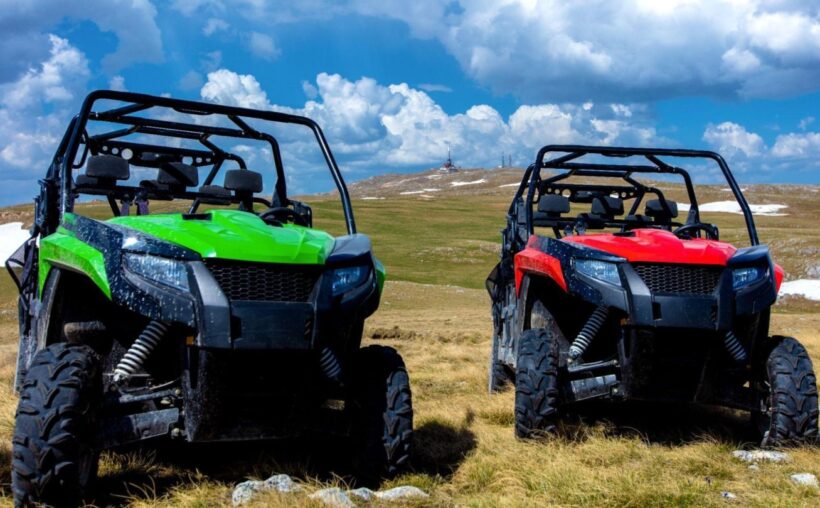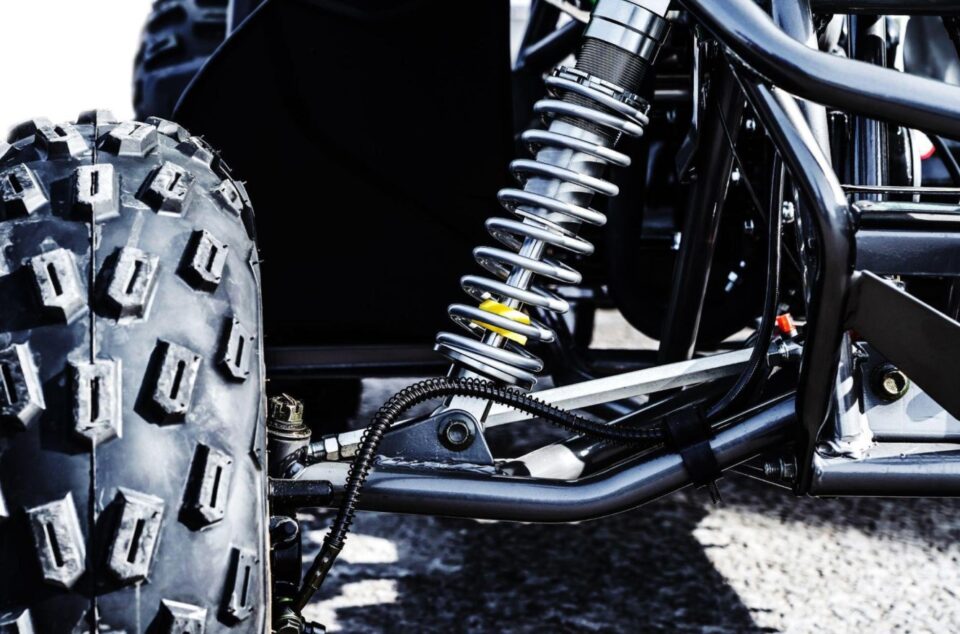Utility terrain vehicles (UTVs) are making a comeback in North America, sparking renewed interest and higher sales than in years past. What’s not to love? With room for passengers, UTVs let you explore the deep recesses of nature in a group. They’re perfect for tours, property reconnaissance, and hauling equipment after the road ends. Exposing them to the elements requires around-the-clock maintenance beyond what you’d expect from an on-road vehicle. Learn how to maintain your off-roader to get the most bang for your buck.
Safeguard Your Safety Gear

All-terrain riding can make for a bumpy commute. Ensure you’re using the required UTV safety gear, including a face shield or goggles if you don’t have a windshield to block debris, mud-ready boots, gloves, and long sleeves and pants to protect you from insect bites, scrapes, and prolonged exposure to the sun.
Pair your gear with UTV headsets to communicate wirelessly with other vehicles or passengers. If something goes wrong with your vehicle, just speak into your wireless communication system to give the others a heads-up. You may not have enough room to pull over when the trail narrows.
Don’t forget to inspect your safety equipment before each ride. Cracked visors, torn gloves, or damaged helmets should be replaced immediately to ensure full protection. It’s also wise to carry a basic first aid kit and emergency supplies, including water, snacks, a flashlight, and a fire starter, in case of unexpected delays.

Inspect Your Fluids
Every trip should begin with a fluid check, including the oil, coolant, and fuel levels. The oil provides lubrication and allows the engine to inject pressurized fuel into the combustion chamber so it can be converted into mechanical energy. Oil collects debris, including metal shavings, from the parts it treats, which makes it less efficient. Use a dipstick to check for discoloration and cloudiness caused by debris. Change the oil and filters every 1,000 miles or 100 driving hours.
Check coolant levels before every ride to spot a leak and drain the system yearly to prevent the engine from overheating.
Check the quality of your fuel if it’s been sitting in the tank. Sudden temperature changes can lead to water separation, increasing the chances of oxidation. Replace the fuel filter every few years to remove debris that can cause clogs.
If you store your UTV for long periods, consider using fuel stabilizer and running the engine briefly every few weeks to prevent fuel breakdown and internal corrosion.
Review Tire Conditions and PSI Levels
UTVs have rugged, deep treads to push mud, snow, and dirt aside. Inspect the rubber for weak spots and lodged debris. Use a brush to clean between the grooves in the tread. Adjust the tire pressure based on the terrain and the manufacturer’s recommendations.
Consider carrying a portable air compressor and a tire plug kit during longer rides. A punctured tire in the wilderness can quickly ruin the day if you’re unprepared.
Check Suspension and Braking Performance
The suspension absorbs the bumps and irregularities of the trail to minimize turbulence. Excess vibrations can throw you out of position, limit control, or cause serious injury. Look over the control arms, ball joints, linkages, and bushings that connect the steering wheel to the wheels. Replace broken parts, rusted connections, and the shocks as turbulence increases.
Inspect the braking system for similar warning signs and replace the pads as they wear down. Monitor your stopping distance when hitting the brakes for quality assurance.
Test Electrical Systems and Battery Life
UTV batteries do more than just turn on the lights. They send power to the spark plugs, which heat incoming air and fuel until they’re hot enough to burn. You can’t start the engine without a healthy battery, but extreme temperatures reduce output. Inspect the battery for acid and corrosion, and secure the connectors. Test the battery’s voltage compared to the expected output to check the condition before a long ride. Shelter the vehicle, or at least the battery, from cold nights to increase the lifespan.
Consider investing in a battery tender if you don’t ride often. It will help maintain the battery’s charge when your UTV is idle for extended periods.

Clean the Exterior and Exposed Parts
UTVs have exposed suspension systems and linkages that can fall prey to flying debris, including rocks, trees, and moisture, that can render the vehicle unrideable. Clean all accessible areas with warm water and soap to remove hazardous agents. Don’t let mud and grime sit overnight.
Apply protective sprays or lubricants to metal joints and bolts after cleaning to prevent rust. Store your UTV in a garage or under a weatherproof cover to reduce long-term exposure to the elements.
Monitor Fuel Efficiency, Acceleration, and Startup Times
The engine works hard whenever you start the ignition or hit the gas. Everything has to go right for it to burn fuel quickly and efficiently, so you can accelerate without burning through the tank. Pay attention to your average mpg rating, how long it takes to reach peak speeds, and how long it takes the engine to start. Cold temperatures make it harder to heat the fuel, putting extra strain on the engine. Check the engine or consider replacing it as these key stats increase.
Store Your UTV the Right Way
Proper storage is essential to keeping your UTV in peak condition during the off-season or between rides. Always clean the vehicle thoroughly before storing it to remove dirt, moisture, and corrosive materials that could damage exposed components. Park it in a dry, covered space—preferably a garage or shed—to protect it from rain, sun, and temperature swings.
If indoor storage isn’t an option, invest in a high-quality, weatherproof UTV cover that fits snugly to keep dust, moisture, and UV rays at bay. Elevate the tires slightly or move the vehicle periodically to prevent flat spots. Disconnect the battery or use a trickle charger to maintain its health. It’s also wise to add fuel stabilizer and run the engine for a few minutes to circulate it before long-term storage. These small steps can prevent costly repairs and keep your UTV trail-ready year-round.
Protect Your Off-Road Investment
A well-maintained UTV can last up to 20,000 miles. It all depends on how much time and effort you give to servicing it. Even the most meticulous routine won’t prevent the vehicle from eventually biting the dust. Conditions can change at a moment’s notice in rugged terrain. Connect to everyone in your group using a UTV communication system to ensure a safe, coordinated ride.
By following a consistent maintenance routine and equipping your UTV with the proper safety tools, you’ll not only extend its lifespan but also ensure every off-road trip is safe, smooth, and memorable.

